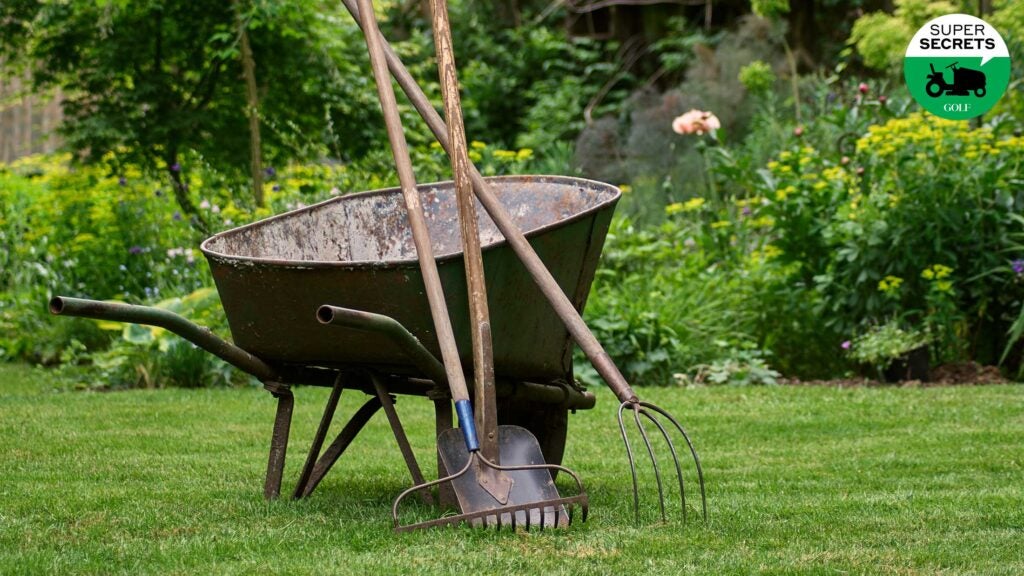Spring is nearly here, and like a grizzly stirring from hibernation, grass in many regions is starting to shake off its winter slumber. In this time of reawakening, course maintenance crews are active, too, gearing up for the coming season. We asked Clay Payne, superintendent at Buffalo Dunes Golf Course, in western Kansas, about the springtime tasks that call for his attention, and what they might reveal about the golden rules of prepping your lawn for spring.
1. Watch your watering
As temperatures warm and days lengthen, it’s tempting to believe that what your grass needs most are deep and frequent drinks. Actually, the opposite is often true. By going easier on the irrigation, you force the roots to dig for water. That’s a good thing, as a deeper root system promotes healthier grass.
Payne’s rule at Buffalo Dunes applies to lawn care, too: back off on the springtime watering. “It’s going to save you money,” Payne says. “But you’re also creating stronger, healthier turf that will do much better if you face real drought conditions later in the summer.”
2. Punch holes
The technical term is aerification, and it opens crucial passageways for the transfer or gasses and nutrients through the root zone. At Buffalo Dunes, Payne and his crew punch every spring (and fall). It wouldn’t hurt for you to do the same at home, especially if you’re dealing with compacted turf on a lawn that endures heavy use.
3. Get a soil test
Most homeowners focus on aesthetics. They want their lawns to look lush and green. That’s understandable. But it’s not how Payne tends to look at turf. He is less concerned with what’s showing on the surface than he is with what’s transpiring underground. Nitrogen. Potassium. Phosphorous. And on.
Every nutrient performs a different function, and Payne wants to know if he’s got too much of one or not enough of another. No wonder he does soil tests. While such tests on a golf course can be endlessly complex, homeowners can buy affordable test kits that keep things fairly simple, providing basic but crucial insights that can make the difference between a withered patch of grass and lawn that’s the envy of the neighborhood.
4. Fertilize — with care!
Fertilizer is big business. And a huge topic, with no one-size-fits-all guidelines, says Payne, who cautions against thinking that you absolutely, positively have to fertilize just because you’ve heard that it’s the right time of year. “People think, well, I’m watering and mowing, I might as well be fertilizing,” Payne says.
Truth is, you might need to feed your lawn. But you might not. “A lot of it comes down to understanding your yard, the microclimates, what’s in the soil,” Payne says. “You also have to get your irrigation right, because if you’re not watering the correct amount, it doesn’t matter how good you are at fertilizing.”
Educate yourself. Conduct a soil test. Talk to an expert at a local lawn care store. If fertilizing turns out to be in order, Payne suggests starting with small amounts, not large applications, and seeing how your lawn responds. If you think your grass looks fine, you might delay the next application, Payne says, and wind up using less over the course of the year.
5. Take the soil’s temperature
Just because the springtime air feels warm doesn’t mean that things are balmy underground. Soil temperature is an important turf-care factor, influencing everything from how much you water and when you fertilize to how frequently you mow.
At Buffalo Dunes, which is planted to cool-season grasses, roots don’t really get growing until the soil temperature reaches around 55 degrees. That’s true of grass. It’s also true of weeds.
When the mercury gets to that threshold in the ground, Payne knows it’s time to get his mowing into gear — and that it’s time to put down pre-emergent herbicides that will help keep weeds at bay as the season unfolds. For home use, inexpensive soil thermometers aren’t hard to find. But a meat thermometer like the one used during Thanksgiving will also do the trick.
“Soil temperatures are going to do what they do,” Payne says. You can’t control them but you can let them be your guide. “A lot of people feel like they have to stick to a certain schedule, like, ‘I always mow on Mondays,’” Payne says. “But depending on what’s happening with the soil, the grass might still just be waking up and not need that. It might really just be time to pump the brakes.”
6. Overseed bare patches
After a long winter, your lawn might look like Larry David. To cover those bald patches, consider overseeding, the Rogaine of the turf-care world. For cool-season grasses, spring is the time to overseed (for warm-season grasses, the time is summer). But before you do so, check the soil temperature and the weather forecast. It’s not a great idea to start growing new grass if a deep-freeze is just around the bend.
